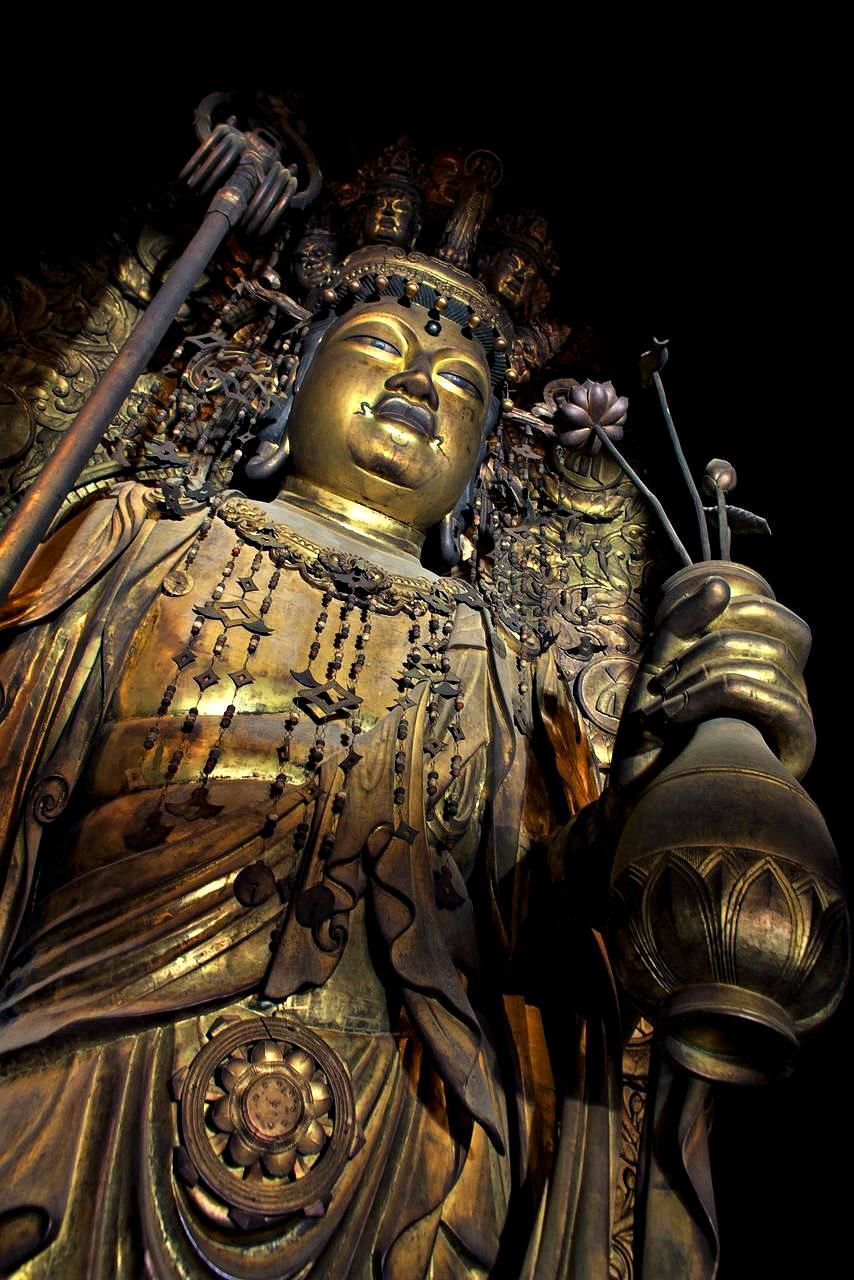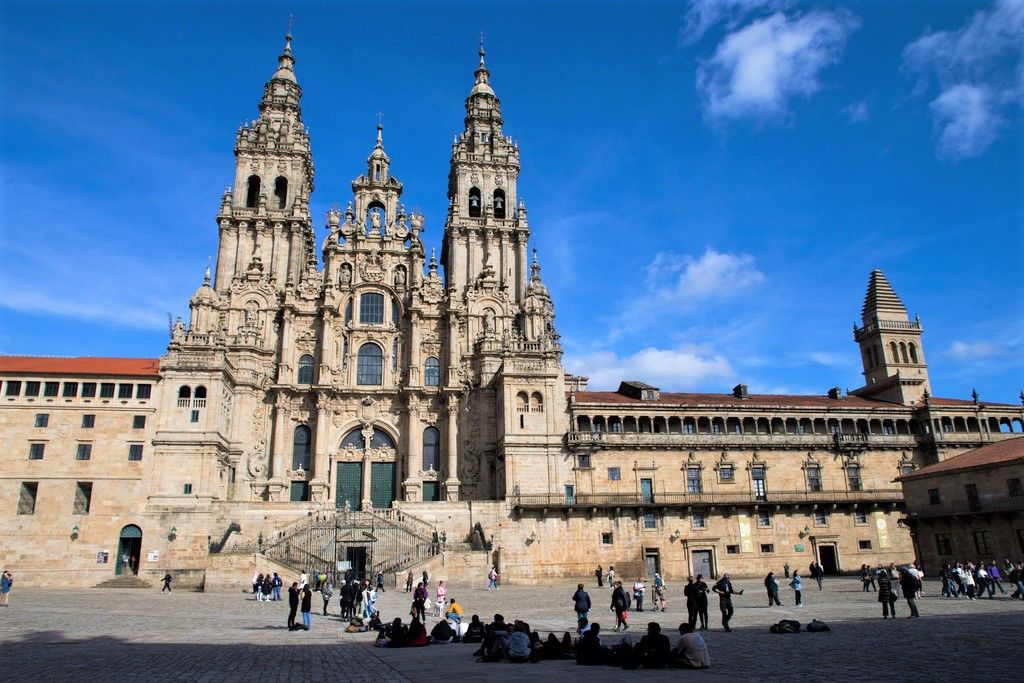Forging Ties Between Japan’s Oldest Pilgrimage Route and Spain’s Camino de Santiago
Newsfrom Japan
Travel Culture- English
- 日本語
- 简体字
- 繁體字
- Français
- Español
- العربية
- Русский
A 13-Century-Old Japanese Pilgrimage Route
The Saigoku Kannon Pilgrimage route connects 33 temples to dedicated to the bodhisattvha Kannon (Avalokiteśvara). The temples are scattered across seven prefectures of western Honshū—starting in Wakayama and continuing through Osaka, Nara, Kyoto, Hyōgo, Shiga, and Gifu—and the complete route covers more 1,000 kilometers. In 2019, the pilgrimage was included on the Japanese Agency for Cultural Affairs “Japan Heritage” list, as a “1,300-Year-Old Journey of the Soul.”
The pilgrimage dates to the year 718, when the priest Tokudō Shōnin fell ill at his temple of Hasedera in Yamato Province (currently Nara Prefecture). He fell into a near-death state of coma, and his spirit descended into the underworld, where he met Enma, the king of hell. Enma commanded him to establish 33 temples to the bodhisattva Kannon to provide salvation to the suffering people of the world. Tokudō Shōnin’s fulfillment of his vow is regarded as marking the start of the pilgrimage.
Originally it was only monks and ascetics who followed the pilgrimage, but as routes and paths developed and improved over time, the pilgrimage became popular with the laity as well. In later centuries, similar pilgrimages developed in other parts of the country. A Bandō pilgrimage route of 33 Kannon temples spans several prefectures in Kantō region around Tokyo and Kamakura. Another famous circuit takes in 34 Kannon temples in the mountains around Chichibu in Saitama Prefecture. Taken together, these three routes make up a set of 100 temples sacred to Kannon. Many of the temples have become popular tourist sites in recent years, and the practice of visiting temples to collect the calligraphic souvenir stamps known as goshuin has become popular with young women, as well as the senior generation.
The main deity enshrined at each of the 33 temples is an image of the bodhisattva Kanzeon, normally known as Kannon (the bodhisattva “who hears the cries of the world”). Worship of Kannon has a long history in Japan and the other countries of Buddhist East Asia. As a bodhisattva who has attained enlightenment and taken a vow to help other living, Kannon is believed to have a special sympathy for human suffering. The bodhisattva appears in 33 different manifestations according to the needs of the moment, and is believed to appear to people in times of trial to offer hope and salvation.

The Eleven-Faced Kannon at Hasedera, temple number 8 on the Saigoku Kannon pilgrimage. (Photo courtesy of Hasedera)
Seven different manifestations of the bodhisattva are enshrined as the main images on the 33 temple circuit: Shō-Kannon (Aryavalokiteśvara or Sacred Avalokiteśvara), Jūichimen Kannon (Ekadasamukha or Eleven-Faced), Fukū Kenjaku Kannon (Amoghapasa or Unfailing Lasso), Senju Kannon (Sahasrabhuja or Thousand-Armed), Nyoirin Kannon (Cintamanicakra or Wish-Fulfilling), Batō Kannon (Hayagriva or Horse-Necked), and Juntei Kannon (Cundi or Extreme Purity). Pilgrims collect a stamp and a calligraphic inscription in special books called goshuin-chō at each temple. Inscribed with the name of the temple and its deity, these seals serve as proof of a visit to a temple, and were traditionally believed to have salvific powers, guaranteeing the pilgrim rebirth in the Pure Land paradise.

An example of a goshuin. Pilgrims receive three stamps at each temple: the stamp at top right shows the number of the temple on the circuit of 33, the stamp in the center represents the main deity, and the stamp at the bottom left gives the name of the temple. (Courtesy of the Association for Promotion of the Japan Heritage Pilgrimage Route)
Parallels in Faraway Lands
In Spain, the Santiago de Compostela pilgrimage also has a history that goes back more than 1,000 years. Santiago is the Spanish name for St. James the Great, one of the 12 disciples of Jesus. He was the first of the apostles to die for the Christian faith. According to legend, in the early ninth century, a shepherd was guided by a star to the place of the martyr’s burial in Galicia in northern Spain. A church was built on the site, which became known as the field (campo) of the star (stella), or Compostela in its modern form.
The Camino de Santiago (Way of St. James) is one of the great pilgrimage routes of Christianity. Around 300,000 people still walk the pilgrimage or a part of it every year, often covering hundreds of kilometers on foot to the cathedral of St. James (Santiago) in the city of Compostela, the capital city of the Galicia region (the required minimum distance to complete the pilgrimage is 100 kilometers). Along their route, pilgrims collect stamps in a document known as la credencial. A final stamp is issued on arrival at the cathedral of St. James, where the Pilgrims’ Office issues the traditional pilgrimage certificate (the Compostela). A network of winding routes leads to Santiago from different parts of Europe; among the most popular are the French Way, the English Way, and the Portuguese Way.

The Cathedral of Santiago de Compostela. (© Cristian Leyva/NurPhoto/Kyōdō Tsūshin Images)
The new agreement linking these two ancient pilgrimage routes was signed by an organization bringing together the 33 temples and local governments in Japan with the autonomous community of Galicia in Spain. On June 18, 2023, a simultaneous remote pilgrimage is taking place online, bringing together people at five different pilgrimage sites (Santiago de Compostela, two of the Saigoku temples, and temples on the Bandō and Chichibu circuits). In October, representatives from Japan will visit Spain, and there are plans to develop cultural exchanges and develop ties between these ancient spiritual journeys on separate sides of the Eurasian landmass.
For enquiries, contact Okamura Hendō at the Pilgrimage Promotion Association in Kannon Shōji temple, 0748-46-2549.
Official website of the Saigoku 33 Kannon pilgrimage
Friends of the Camino de Santiago, Japan NPO (in Japanese only)
(Originally published in Japanese on May 20, 2023. Banner photo: “Temple One” of the Saigoku 33 Kannon pilgrimage route, Seiganto-ji in Katsuura, Wakayama Prefecture, magnificently set against the backdrop of the Nachi waterfall. Photo courtesy of the Association for Promotion of the Japan Heritage Pilgrimage Route.)
World Heritage religion Buddhism Christianity Spain pilgrimage